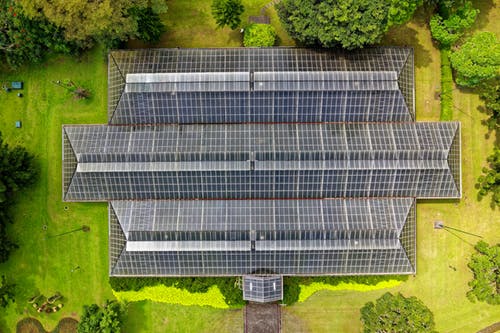California is known as ‘the sunshine state’, and it isn’t difficult to understand why. Each of the 50 states that comprise the United States of America has its own identity – the Cajuns of Louisiana are very different to the Harlemites of New York; they have their own histories, customs and cultures. But California is in a league of its own.
People around the globe associate California with sunshine, sandy beaches and a peace and love attitude that has been firmly embedded in the state ever since it served as the epicenter of the hippy counterculture movement of the 60’s. California is the perfect place for the solar revolution, for a number of reasons. Understanding how and why solar power is important to California, and will become even more important as time goes on, requires an understanding of California itself.
It isn’t just an abundance of sunshine (although obviously that is very helpful when you are generating solar power), that makes California such an ideal location for a solar power revolution. The culture and history of California means that the virtues of solar power – its environmental benefits in particular – don’t just speak to the hippy heart of California, they strike at the heart of some of the biggest issues the state is now facing as a result of the climate emergency.
Why Solar Power?
Before we consider California as a specific case, it is helpful to establish exactly what it is about solar power that makes it an attractive option for the future of renewable energy. In a sense, all of the energy generated on Earth is ultimately solar energy. This might seem like an obvious fact, but it is easy to overlook and is actually more important than you might think.
Coal, for example, is formed underground over a very long period of time. Coal is made from long dead plants, plants that used the sun as their energy source while they were alive. The sun is everywhere and it is always there. Even on the greyest of days, when black clouds coat the skies, some sunshine makes it through.
There have been periods of human history, such as the eruption of Krakatoa, when the sun has been blocked to some degree by ash, dust or other phenomena. Even in these conditions, the sun is able to provide sufficient energy to sustain life on Earth.
There are two forms of renewable energy that, in principle if not yet in practice, can deliver us tremendous amounts of energy from virtually nothing – solar power and nuclear fusion.
If we can refine our solar technology sufficiently, we will be able to generate enormous amounts of energy from highly efficient solar cells. Other than the environmental costs of manufacturing these cells and the cost of installing the system itself, there are no other costs, financial or environmental, associated with generating solar power. Solar power can provide us with essentially limitless clean energy. So why isn’t it?
Energy from Light
Plants are really remarkable organisms. Even the humble blade of grass is an intricate machine, the result of some truly miraculous biology and physics. You probably remember photosynthesis from school, but let’s quickly run through it again. Understanding how plants are able to make energy from the sun is the best way of demonstrating the potential that solar power offers.
Humans breathe in oxygen and exhale carbon dioxide, and this process is called ‘respiration’ (and yes, that is different to breathing). Plants, as living organisms, also respirate. However, plants work differently to people – they love carbon. In fact, most of what a plant is, on an atomic level, is carbon.
Plants get their essential nutrients from the soil around them via their roots. These nutrients are important, just as calcium, iron etc. are all important to people. But these nutrients are not what makes a plant grow. Instead, plants absorb carbon dioxide from the air through their leaves and use the carbon to build more plant mass.
However, carbon dioxide doesn’t just consist of carbon. In fact, each carbon dioxide molecule consists of 1 carbon atom to 2 oxygen atoms. While it is in this state, the carbon is of no use to the plant. This is where photosynthesis comes in.
We’re simplifying things here, but essentially plants use the energy of individual particles of light that hit its leaves to split the carbon dioxide into carbon and oxygen in the presence of water. The oxygen is a waste product and as such the plant excretes it into the air, where you and I breathe it. The rest of the products are converted into glucose. You can think of glucose molecules as being like tiny molecular batteries.
That’s cool, but it isn’t exactly earth-shattering. However, there is a very good reason that we have long sought to emulate this process in an energy cell or battery. That reason is all to do with efficiency.
California has a proud history with regards to solar power – the Mojave Desert is, if anything, too sunny, even for California. It is in this vast desert that a number of world-leading solar power facilities have been built. In 1991, the San Bernadino Solar Energy Generating Systems plant was the most powerful solar power facility on the planet, generating an impressive 354 MW of sustained power output. The facility held the record until the Ivanpah Solar Power Facility in the Mojave Desert was opened in 2014.
However, even our biggest and best solar batteries are, to be blunt about it, laughably primitive when compared to what the humble flower (any flower) is able to achieve. Our best photovoltaic cells are only about 22.8% efficient. On the other hand, plants are able to photosynthesize with somewhere in the region of 99% efficiency!
Why Can’t We Do That?
The ultimate goal of solar power technology is to replicate the process that occurs inside a plant and make it available in artificial cells. However, we are discovering that photosynthesis in plants is way more complex than we previously imagined. As a result, the photovoltaic cells that we use to produce energy in solar panels work quite differently to a plant. That’s not to say that all solar panels are the same – they’re not. But with the technology where it is currently, we have to settle for our relatively inefficient method of harnessing solar power.
A plant is able, via mechanisms which are currently unknown to science, to utilize quantum mechanics in order to operate at maximum efficiency. If that sounds absurd to you, don’t worry – it’s even more absurd if you are able to understand the physics of it. We won’t dive too deeply into quantum mechanics here, but again a brief overview is an effective demonstration of just why we are so doggedly pursuing solar power.
This is a very simplified explanation – if it piques your interest, then you should definitely look into it more. But for our purposes, think of it like this – within the leaf of a plant there will be water and carbon dioxide. In order to photosynthesize, a plant needs each particle of light that hits its surface to be transported to where the water and CO2 are, so that its energy can be used in the reaction. Even with billions of photons (light particles) hitting the surface of a leaf, the chances of a particle landing on the right spot at the right time is vanishingly small.
This should mean that a plant should be a very inefficient machine in this regard, and yet they are able to photosynthesize with almost perfect efficiency. They are able to do this by taking advantage of an effect called quantum tunneling. In layman’s terms, quantum tunneling refers to the ability of quantum mechanical objects (anything smaller than a single molecule) to travel somewhere it shouldn’t be able to. If you throw a ball at your wall, it will bounce back. If you throw a particle at a wall, it will occasionally appear on the other side of it.
That plants are able to control this process in some way, thereby ensuring that the light it gathers is always where it is needed, is a profound demonstration of the potential power of solar energy.
So, is Solar Power Worth it Today?
Absolutely! We may not yet have scratched the surface of what solar power technology will one day be capable of, but solar technology has already come a very long way. We aren’t at a point yet where we can realistically switch most or all of our power needs over to solar, but that point is moving ever closer.
In the future, we may well have solar cells that are part biological or which replicate biological processes. But, as with any technology, getting us to that advanced point will require investment now. The photovoltaic panels that are sold today are many times more efficient than those produced just a few decades ago.
It Never Rains in California
While all of the US is experiencing the negative impacts of the climate emergency, California has been particularly badly hit already. Last year, the state emerged from a drought that lasted over a decade. Wildfires in the state are burning bigger and more frequently than they used to. California is uniquely positioned to take advantage of solar power, and doing so could address a number of pressing issues facing the state.
California has been at the forefront of environmentalism in the US for decades and the state has set itself some ambitious targets with regards to solar power. The state pledged that by 2016 it would be distributing 3,000 MW of solar power – equivalent to the output of several Ivanpah-sized facilities. In 2011, California voluntarily expanded this with a target of 12,000 MW by 2020.
Consequently, the state offers some excellent incentives to homeowners who choose to install solar panels on their property. It is truly tragic just how many Californians have now lost their homes or lost relatives, or know someone who has, to the wildfires that have ravaged the state in recent years. This has brought the urgency of the current climate situation into sharp focus for many.
There are a number of cities in California that are embracing the solar revolution. It won’t surprise anyone to learn that San Francisco has been a booming market for the solar power industry, but it isn’t the only city that’s been embracing this tech. The cost of solar panels San Diego, for example, is further offset by local initiatives that encourage homeowners to add solar panels to their homes.
San Diego is actually a fantastic case study for the benefits of solar power. Solar panel installation in San Diego is on the rise – not surprising for a city that enjoys 266 days of sunshine on average each year.
Businesses like Semper Solaris have really raised the bar in recent years; they offer some of the best quality solar panels on the market today and are willing to work with customers to ensure that they end up with the right product for their situation. One of the things that sets Semper Solaris apart from the competition is that they also offer general roofing services, as well as battery storage. Solar power is becoming more common, but there are still not many solar companies in San Diego that are also providing batteries to store up solar energy. If you want to do your bit to help mitigate the impact of climate change on the beautiful sunshine state, you could do a lot worse than installing solar panels on your home. If you would like to know more, you can probably find more information here.
With each passing year, the need for us all to do our bit to help the environment is becoming clearer. Far too many people are beaten into submission by the apparent hopelessness of it all. But installing solar panels on your home will enable you to reduce the amount of energy you use from non-renewable sources and, after a relatively short amount of time, it will have paid for itself in the amount of money that you’ve saved.



